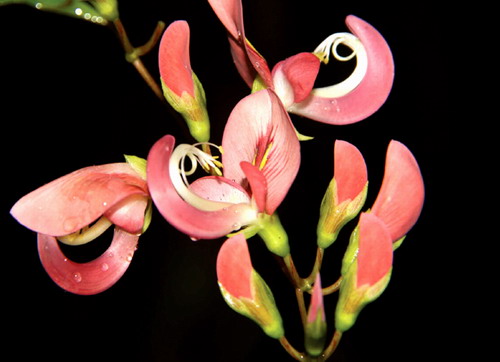Pueraria stracheyi has long been recognized as erroneously placed in the genus Pueraria. Researchers from US National Herbarium and Xishuangbanna Tropical Botanical Garden examined the history behind this collection, past hypotheses concerning its taxonomic affinities, and morphological and ecological comparisons with Shuteria and Apios carnea. They concluded that Pueraria stracheyi represents a synonym of Apios carnea. A key feature that stands out on the holotype of Pueraria stracheyi is the distinct curvature of the flowers in bud. Like a number of other East Asian genera, Apios has a disjunct distribution with six species in East Asia and two species endemic to North America. Apios is easily distinguished by its large, usually strongly curved keel with highly reduced wing petals relative to the standard and keel petals. It also has a curved staminal column with a circular style. These features coupled with leaves having (3–)5–9 leaflets place the genus as somewhat uncharacteristic within Phaseoleae. Apios carnea is distinct from its Asian congeners by having red, reddish purple, or orange flowers coupled with leaflets longer than 5 cm . In addition, it is the only Asian species with inflorescences commonly longer than 30 cm (. Apios carnea shares similar flower color with its American congeners, but is differentiated by its longer calyx lobes: the top two fused calyx lobes are 4–5 mm long in A. carnea whereas the American species exhibit a top calyx lobe that is almost truncate, with a length of less that 1 mm. Furthermore, A. carnea has a long, lax inflorescence that often exceeds 30 cm whilst those of A. priceana and A. americana are densely flowered with inflorescence lengths usuallyless than 16 cm long. For more information, please read “Pueraria stracheyi, a new synonym to Apios carnea (Fabaceae)”. 
Flower of Apios carnea |

